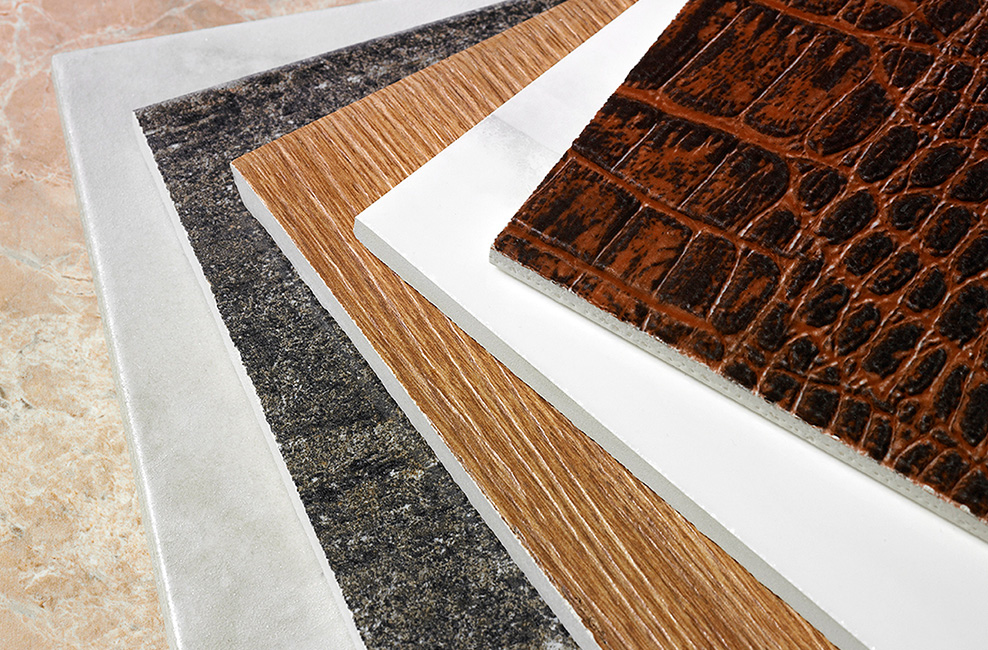Peter Halliday presents the latest data on ceramic tile imports and how it is affected by changes in construction activity.
The Australian building and construction industry has faced a number of challenges during the last year. Aside from the widely reported problems with combustible cladding and cracks appearing in several high-rise Sydney apartments, cracks have been appearing in the long running residential construction boom.
Building approvals and dwelling commencements, especially multi-unit dwellings, are both lower than one year ago. In July 2019, the Australian Bureau of Statistics (ABS) reported residential building approvals had reached a six-year low, falling 25.6% in the 12 months to the end of June 2019. The largest fall in approvals was in multi-unit dwellings, a fall of 39.3%. Private single dwelling approvals fell by 14.8% in the same period.
While lower building approvals point to a fall in future activity, building commencements are good indicators of recent and current requirements for ceramic tiles. Fig.1 illustrates the link between ceramic tile import figures and residential building commencement numbers. The Housing Industry Association (HIA) expects dwelling unit commencements to drop to 170,000 in 2019, down from 221,877 built in the 2018.
Forecasts suggest that 2019-20 will be the low point in dwelling construction with the mid 2020 forecast to see a gradual upturn through to 2022. There has been some positive news however with AMP Capital revising their forecast down from a 15% peak-to-trough fall to a 12% fall, while recent lending data showed an uplift in investor loans for the first time in almost one year.
As tiles are required at the end of the construction cycle however, there is a timing delay in imports being affected. While the fall in building approvals has been occurring since 2017, the long run of almost record volumes of ceramic tile import levels has inevitably seen a downturn since late 2018.
Imports of ceramic tiles in the 2018-2019 financial year (1 July 2018 to 30 June 2019) totalled 42,177,154 square metres with a total Australian Customs value of A$455,488,586. This represents a decline of 4,056,741 square metres or -8.8% on the last financial year. The decline in Australian customs value was much lower, falling A$13,912,381 less or -3.0%.
The rolling 12 month import quantity graph in Fig.2, illustrates the sharp downturn in ceramic tile imports since the September Quarter 2018. While the decline over the full financial year was -8.8%, the decline in the last three quarters compared with the same quarters in the previous year was greater at -10.5% in December Quarter 2018, -17.3% in March Quarter 2019 and -13.4% in the June Quarter 2019.
The detailed breakdown of the import data by country of origin and destination state is shown in Fig.3. The average price per square metre of imported tiles increased to A$10.80, a reversal of recent declines in average value, due to the ongoing decline in Australia’s foreign exchange rate.
Once again, over 91% of imports originate from just four nations. China still supplies the overwhelming volume of imports. China’s share of tile imports increased to 70.9% of total imports although the total square metres declined. China exported 29,894,314 square metres, down 1,565,353 square metres or -5%. Chinese imports represented 56.5% of the total import value, an increase of 2% over the previous financial year.
While China supplied the overwhelming majority of tiles imported into Australia, there were changes in the ranking of other major exporting nations. Fig.4 illustrates the volume of the five largest exporting nations to Australia. It is notable that India has risen from the eighth largest source to the fifth largest in the last financial year. Italian imports declined by 987,490 square metres or -21%. Italy still represented 8.9% of the total, down from 10.2% last financial year.
Imports from Malaysia declined by -19.8% but represented 8.1% of the national total. Like China and India, Spain increased its market share slightly from 3.7% to 4% but imports declined by just 11,172 square metres.
As the fifth largest source nation in 2018-2019, imports from India increased by 260,318 square metres to 615,367 square metres. Last year’s fifth largest source nation, Thailand, continued its steady decline, falling another 345,142 square metres or -51.5% on the previous financial year.
State imports over the last five financial years are shown in Fig.5 while Fig.6 graphically shows each state’s imports over the last nine years. In 2017-2018, New South Wales was the declared destination for 41.5% of all tiles imported into Australia. While the volume fell by 1,249,699 square metres or -6.7% when compared with the last financial year, the share of the national imports rose by 0.9%.
Volumes imported to Victoria fell by 691,426 square metres or -6.0%, a slightly smaller percentage fall when compared with NSW but the fall represented approximately half the volume of the fall in NSW. Victoria increased its share of the national market to 25.6%.
Queensland imports fell by 1,530,296 square metres or -16%, the largest fall of any state except Northern Territory. The decline can be seen clearly in Fig.6 and seems to have begun earlier than the downturn in other states.
Imports to Northern Territory fell by -30.6% while imports to South Australia declined by -0.3%, Tasmania rose by 17.1% and Western Australia again fell by -13.1%, continuing a long period of flat or negative growth.
A breakdown of imports by Harmonised Tariff codes is shown in Fig.7. The descriptions classify tiles by water absorption and traditional size categories. Porcelain tile with less than 0.5% water absorption remains the biggest single category totalling 57.8% of all imports. A further 20.3% of imports are tiles with water absorption of between 0.5 and 10%. Wall tiles or tiles with a water absorption over 10% make up 17.5% of all imports. Tiles specifically categorised as mosaics make up only 1.2% of all imports.
Click here to view full pictorial article.

